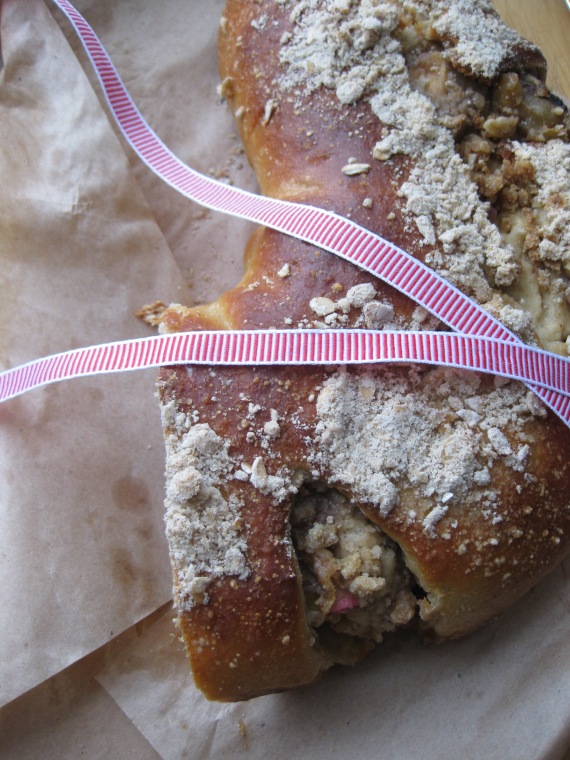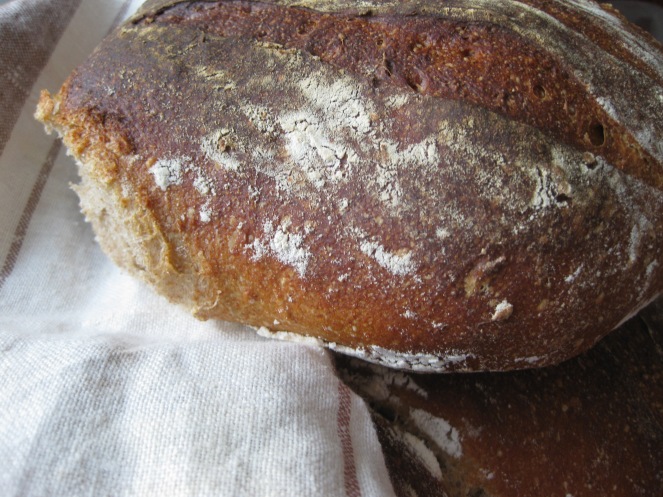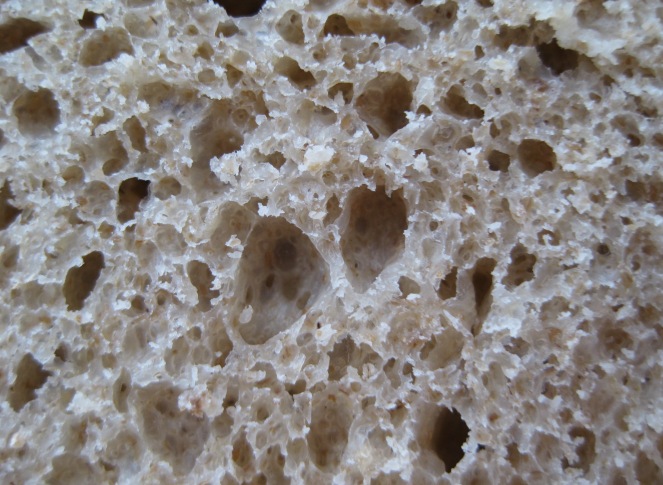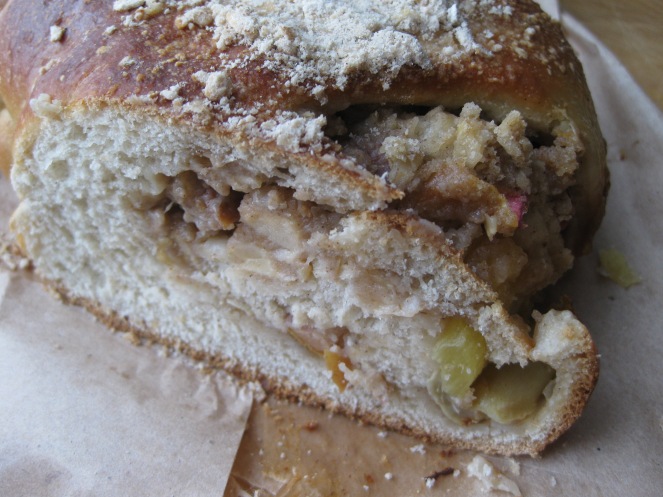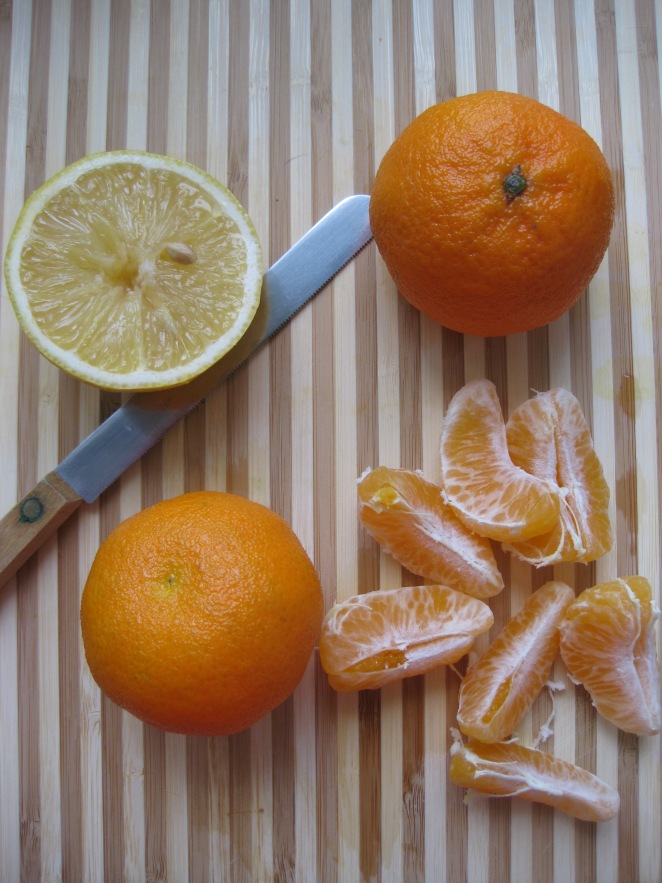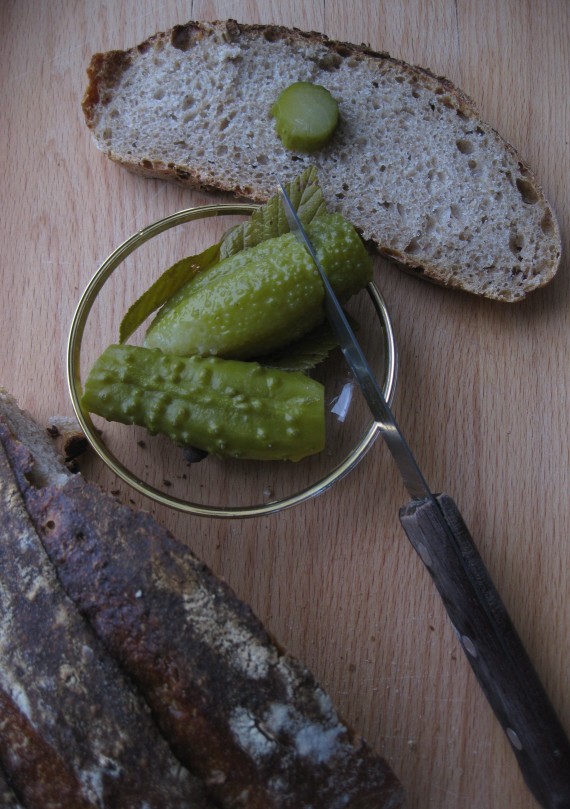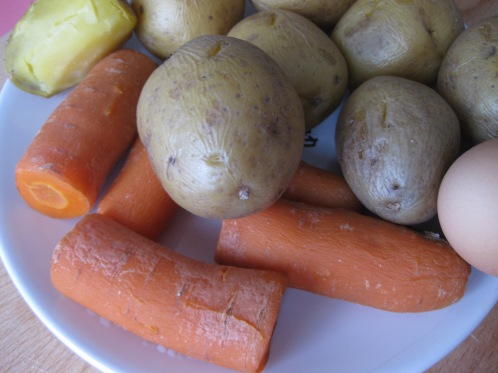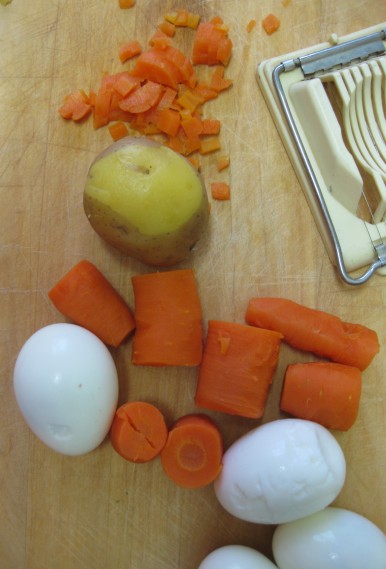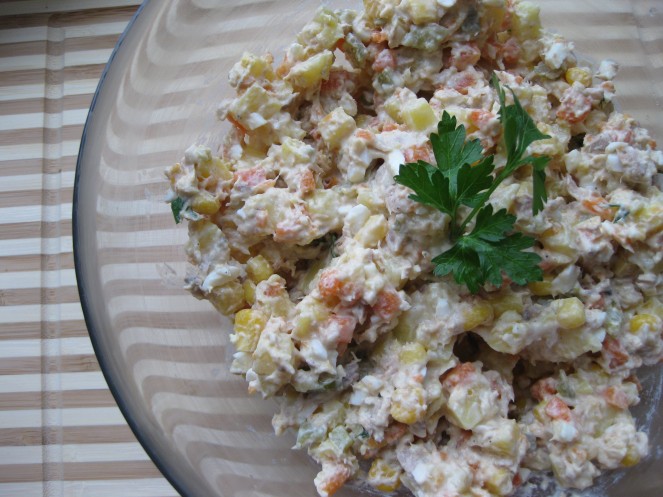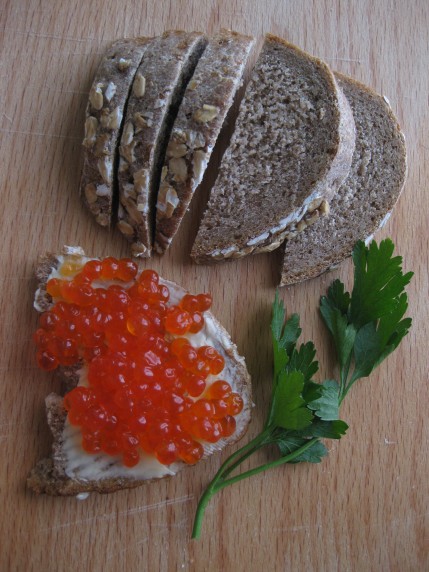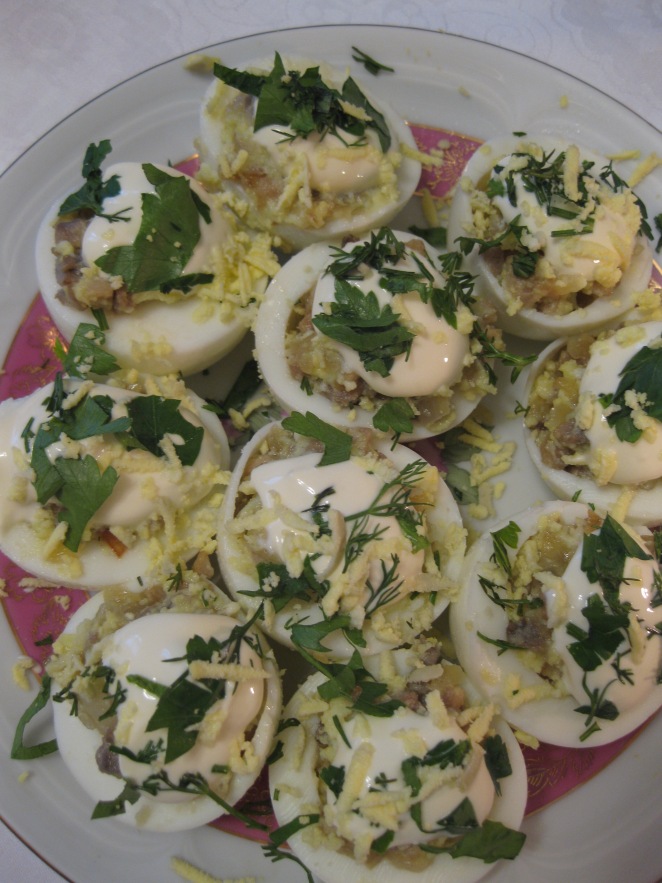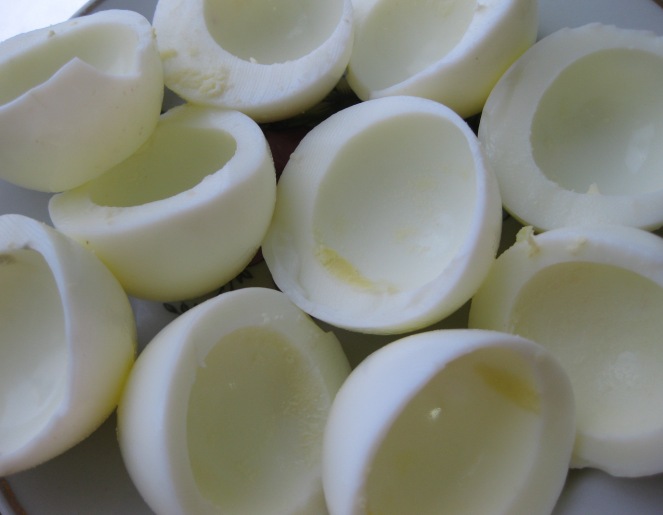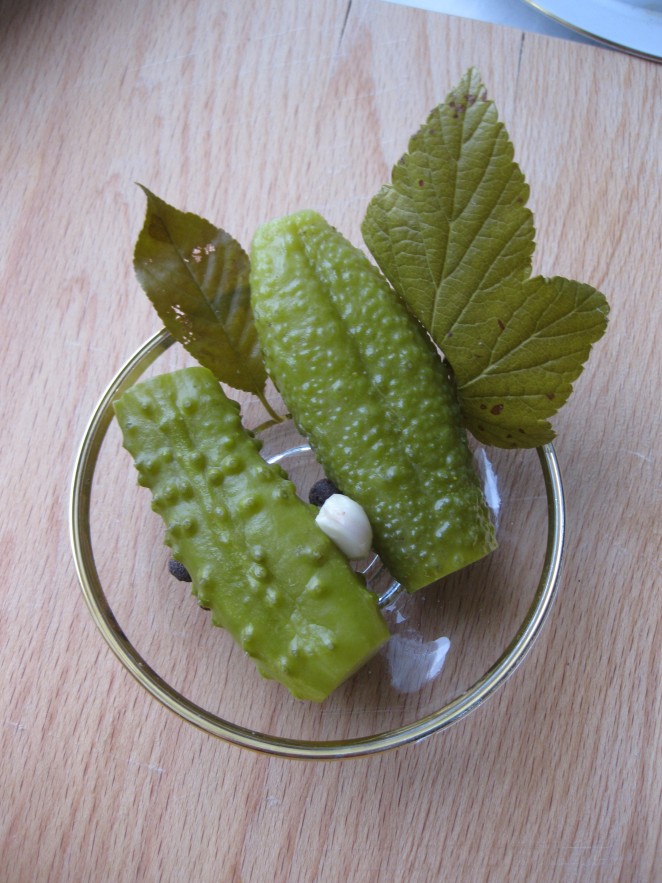Petite Alsace and Petits Pains

What does it mean to go to France and Italy for several days? Apart from seeing so many things you forget what / where / when (and especially with the photos – why?!), apart from meeting with your friends, talking in Greek in France and in fake Italian in Italy (at least I tried!), apart from doing the best sport ever which is walking around the city, well, apart from all these things, it means coming back with a kilo of both polenta flour and couscous, unpronounceable Italian cheeses you will never find here, tea from Trieste, and of course sausage and jambon Forêt Noire for my carnivorous Dad. I even took photos of some traditional recipes from the region my friends live (I would have liked to get even more local recipes, especially family ones, but had no time and no working brains already). We were about to take with us a church-bell-sized Pandoro but had just no free space / hands. Apart from all the photographic stuff weighing over 20 kilos, we were carrying back also two albums of photos purchased in Strasbourg. And a single post card remains after sending some to various destinations (see above – pictured with a weird hazelnut sausage from Strasbourg), but surely the best – the caption reads ‘Chocolate eliminates all my troubles’, so true! 😉
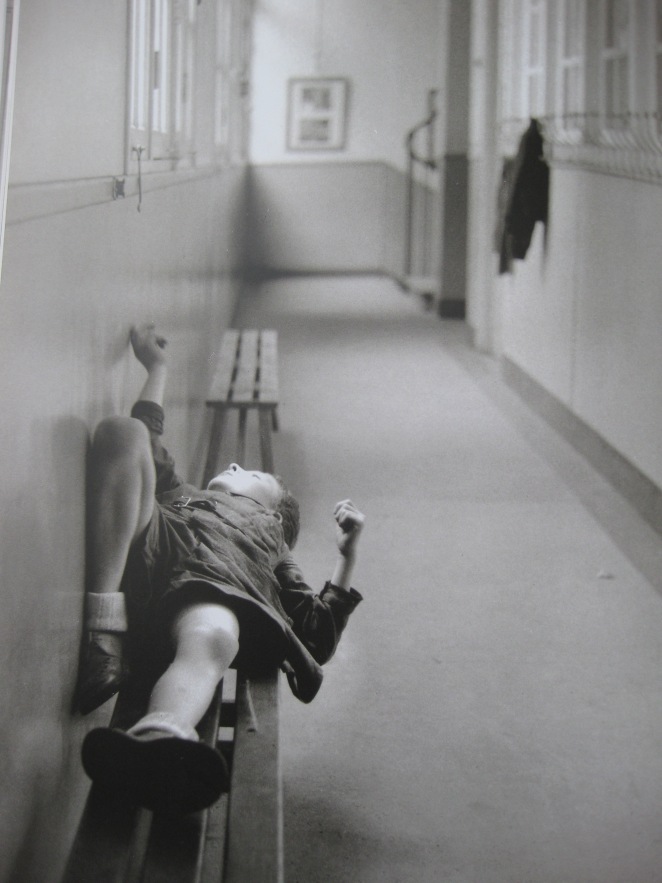
{This is what I’m doing right now – waiting for the ideal job to arrive;) oh yes, I seem to be somewhat occasionally unemployed throughout the year!}
We visited my favourite second-hand book store in Strasbourg where we bought among other books this collection of black-and-white photos of schoolchildren of the post-war Paris taken by Robert Doisneau, Les Doigts pleins d’encre (Ink-stained Fingers, 1989, but the photos are from the mid-fifties, if you ever saw Les Quatre Cents Coups you know what I mean), with the text by François Cavanna (recollections of the childhood years – they also used to attach the ‘maple keys’ (scientific name for this thing called ‘nosik’ (little nose) in Russian is samara)) to their noses pretending they were rhinoceros!). The photos are truly amazing, taken as if the photographer was invisible – he should have spent days with the children not to be paid attention to at all! And you would tell no difference between the photos of the children in the USSR taken during the same period, I’m sure.
I decided to divide the posts on my travel and make a separate one on Strasbourg, the city I keep coming back to and will do so in the future for sure, moreover I have some food-related photos taken there (and yes, there’s a post about this city already, but I cannot get enough of my Petite Alsace…). I never feel completely sure I’m in France when I’m in Strasbourg or the Alsace region. There are these distinct German roots there and even with all the French people living there (Alsace became officially French in 1945) and the dying-out of the Alsatian language and culture… there still remains this ‘something special’. The region can serve as the background for the movies about the late 19th – early 20th centuries – it’s full of red brick factories and railway stations with impossible names. But there are also wonderful vineyards stretching to the horizon (Riesling is from this place), castles scattered all over the place, tiny villages (there’s one with just one street, well, a very long street!) with the sturdy maisons à colombage, storks building their nests everywhere from the plane-trees to the silage towers… and there’s enough to eat for sure 😉
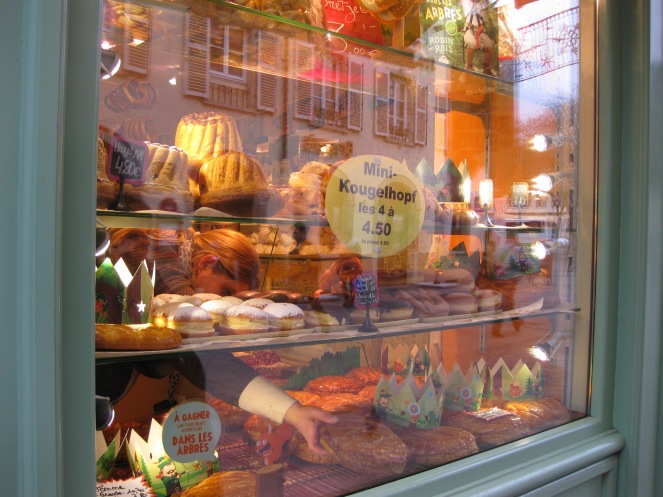
Kougelhopf (or Kouglof, reminds me of the Eastern yeast bread/cakes, see the top shelf in the photo above, ahhh those French pastries…), Flammekueche (Tarte Flambée, let’s call it a very thin pizza with traditionally onion, lard and fromage blanc on top but you can get it in all possible versions):
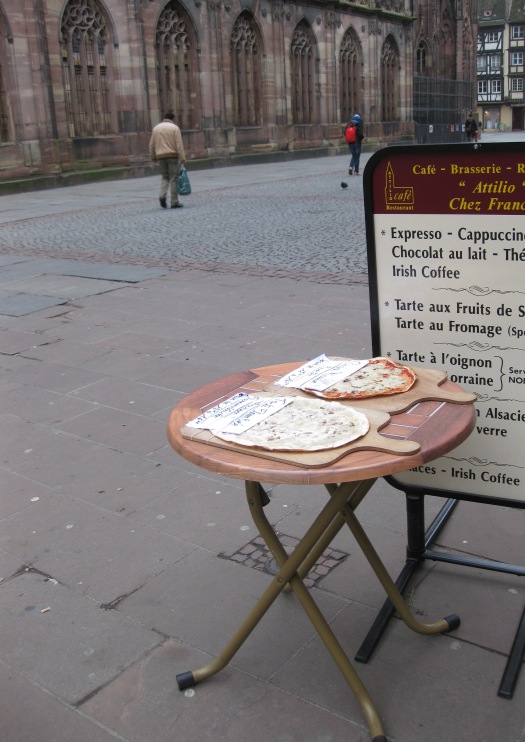
{tarte flambée on display right in the Place de la Cathédrale}
…and of course the enormous Choucroute or Baeckeoffe for the meat eaters (the former is three kinds of meat + sauerkraut and the latter is, well, the three kinds of meat + onions and potatoes, baked)… there’s much more of course, the poor vegetarians included. What I particularly enjoyed in Europe were the farmers’ markets – you can just go there and LOOK. The colours are great even in the thin winter light.
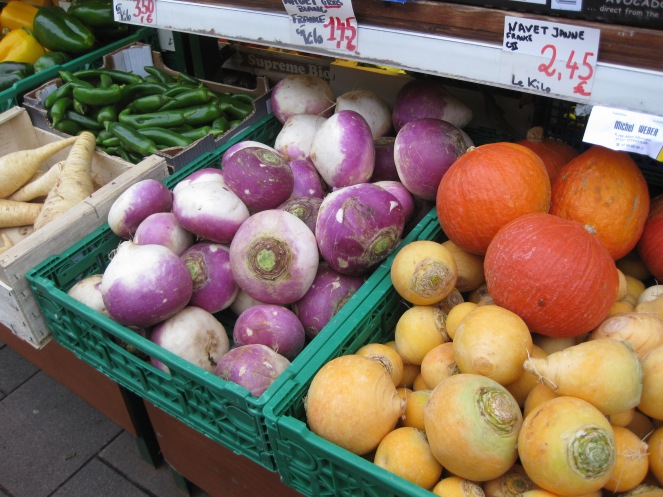
Each Wednesday, for example, they have this fresh produce market in the middle of the Place Kleber in Strasbourg, where I used to buy Jambon sec for my Dad when I was going home or he was coming to France. This time we purchased some jambon too and I finally took the photo of this kit Choucroute for two people:
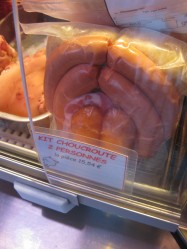
The producer is called Marca (their permanent address is 15 Rue du Soelgel, 67390 Marckolsheim) and they sell all kinds of the traditional charcuterie as well as pies with meat (not my stand in the market for sure). We however opted for choucroute in a tin that you just warm up…
But we finally went to a restaurant and a good choice we made:
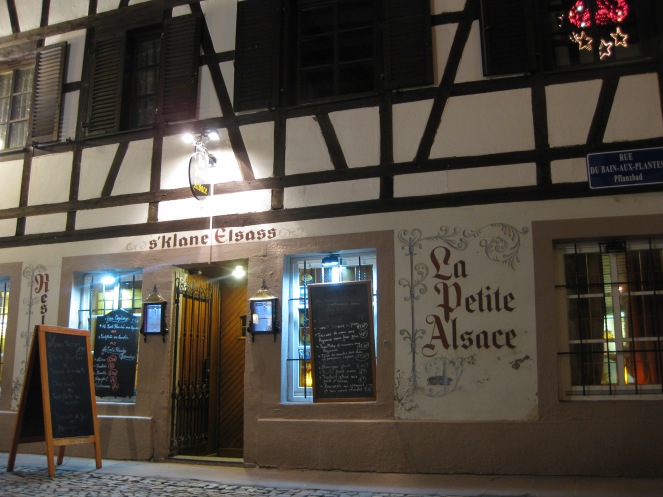
La Petite Alsace (23 Rue du Bain aux Plantes, 67000 Strasbourg; the title translates as Little Alsace) right in the Petite France district but somehow a not that touristy place where you can get a huge Tarte flambée au munster (a very good regional cheese) or a fixed menu with all the necessary regional specialties to make you sure you a). ate well and a lot and b). will certainly need to buy larger clothes if you continue comme ça! =) Although in this restaurant you won’t see the stammtisch – the tradition of sitting at a long table all together, all generations, still preserved even in the restaurants and bars, it’s darkish inside with tiny windows separating you from other guests – and very generous portions! (which also after the food in Italy made me think we certainly lack a lot in St Petersburg). The people there were a bit perplexed when I spoke Russian to my parents, Greek to Isabel (the best person in Strasbourg), occasionally English among all of us and then French to them. A truly Erasmus experience!
Other places to eat in Strasbourg that I would suggest (and yes, I’m advertising Stras and these restaurants just out of my sheer love for them! Have never done it but decided to share my favourite places with you in case you visit Stras one day, which you should!):
L’Épicerie (6 Rue du Vieux Seigle, 67000 Strasbourg; the title means grocery) where they serve warm tartines (like a wedge of artisan bread warmed in the oven) with all kinds of toppings (I enjoyed my goat cheese and honey tartine without even noticing it was goat cheese which I normally avoid!). The inside interior is stiled as an old grocery store + a French café and it’s always full, especially in warm weather with tables right in the narrow street of the city’s old centre.
La Corde à Linge (2 Place Benjamin Zix, 67000 Strasbourg; the name is funny, it means the string for the linen) also in the centre of the Petite France, used to be a small place serving the traditional pasta – spaetzle – and now enlarged and occupying almost the half of the square in warmer days. Kind of IKEA-like inside but very convivial as the French denominate such places. I’ve tried their spaetzles under tomato sauce, a huge plate and a spicy sauce!
a more touristy and more expensive place but very impressive and great inside – Au Pont Saint Martin (15 Rue des Moulins, 67000 Strasbourg), the same Petite France district, situated just next to a bridge and having several floors with sort of a balcony above the water. There you will pay for the interior, view and good traditional food – maybe just the portions will be a lil bit smaller =)
and for those who like game dishes here’s a place to go – le Renard Prêchant (34 Rue de Zurich 67000 Strasbourg; the title translates as the Preaching fox), off the centre, on the other side of the Ill river, in the Krutenau district. A very characteristic place inside of a traditional house, and if you happen to be vegetarian you can still get a huge plate of potatoes with fromage blanc. There’s my favourite Musée Alsacien close to the restaurant, where you walk through a traditional Alsatian house (actually houseS), and there’s this solid kitchen with copper kitchenware and porcelain and wooden molds for cookies… The Alsatian houses are all dark wooden inside with creaking staircases and embroidered curtains and stuff, and yes they’re mostly dark and have this distinct smell of the old wood exposed to the humidity, beer-brewing right in the house some ehm years ago and something else which I cannot tell exactly. Alsace is dark in its colours but once you go in the country on a fine day, it’s no darker than anywhere!
Ah yes, the jambon Forêt Noire!
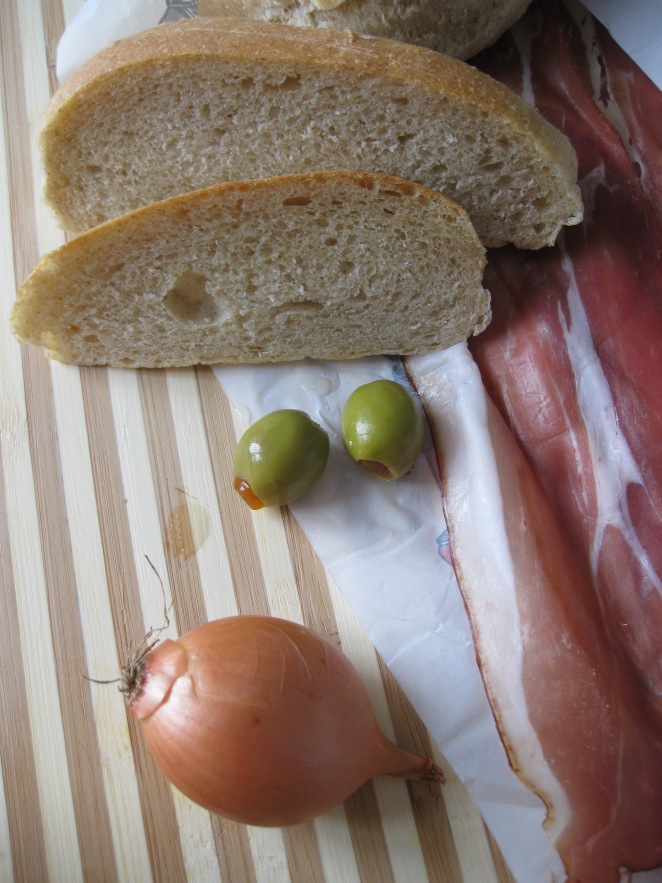
and look at the girl-sausage maker in a traditional attire with a black bonnet:
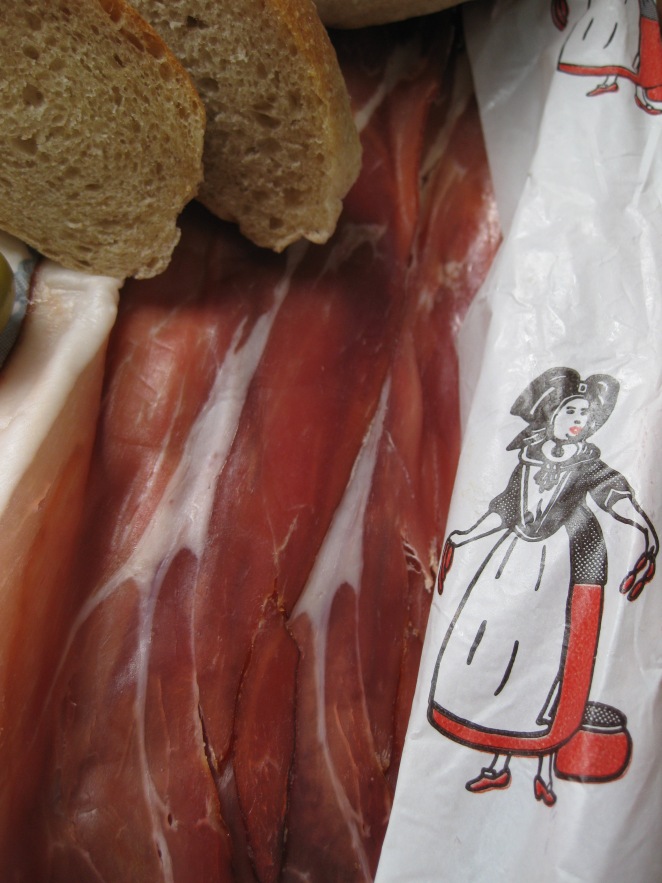
But no, come on, staying in Alsace (a meaty place indeed) hasn’t converted me into a meat-addict! Actually I was taking photos of the French Rolls – or Petits Pains adapted from about.com.
A year ago – French Countryside Bread with Poolish (French again!) and Cottage Loaf, both made with poolish.
The recipe is supposed to make 12 rolls but I made my rolls larger and added whole wheat to the all-purpose flour. The recipe is very easy to follow and results in soft handy 🙂 breakfast bread:
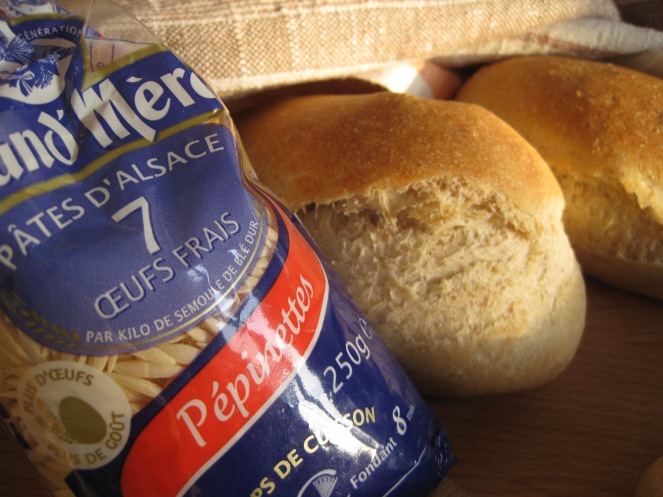
{here pictured with the pasta from Alsace which I actually found in a not very chic supermarket in my town!}
Finally a recipe in this post 😉 Not very much Alsatian or French probably but still a basic recipe you can use to fashion your own French rolls. If you want them to be as they should be, then the oh-so-Frenchy shape is an elongated roll with tapered ends (but I’ve seen perfectly round rolls too) and normally there’s just white flour in them.
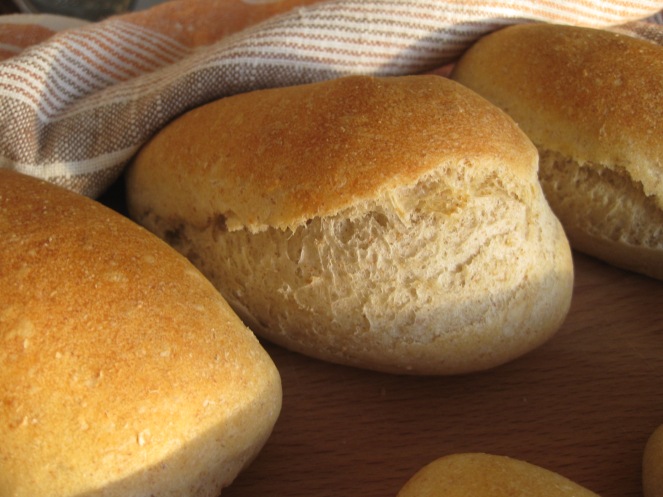
Soft but crusty, they will be devoured in just about no time, believe me. Bon appetit!
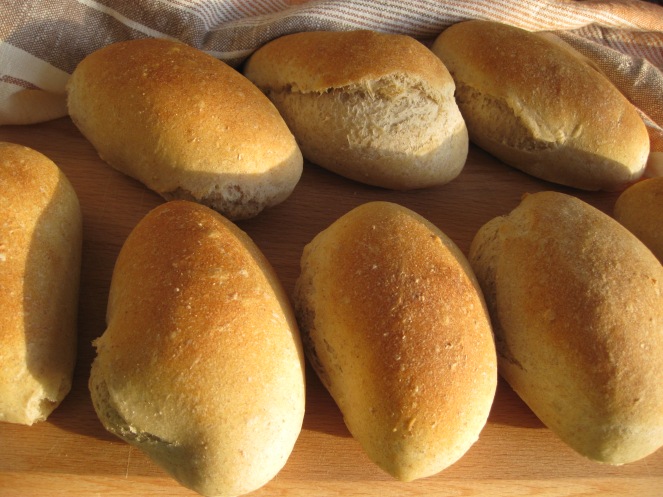
And if you happen to be in Strasbourg after all, get your pain from this bakery – Au Pain de mon Grand–Père (58 Rue de la Krutenau, Strasbourg), very close to that game restaurant, this place is just amazing and very popular with the locals. After inhaling the freshly baked bread aromas and getting yourself a non-supermarket baguette, try their Tarte aux myrtilles (blackberry tart), mmmmm!
The Italian post will surely come, though a bit later. Even if I’m currently unemployed, there seem to be so many things to do… And also my friend brought me the enormous two books (the third will come to me later) of the Lord of the Rings and yes, I’m re-reading the first part! It will definitely take more than two days per book as it was ten years ago now that I’m reading it in the original but it’s worth it.
G.

